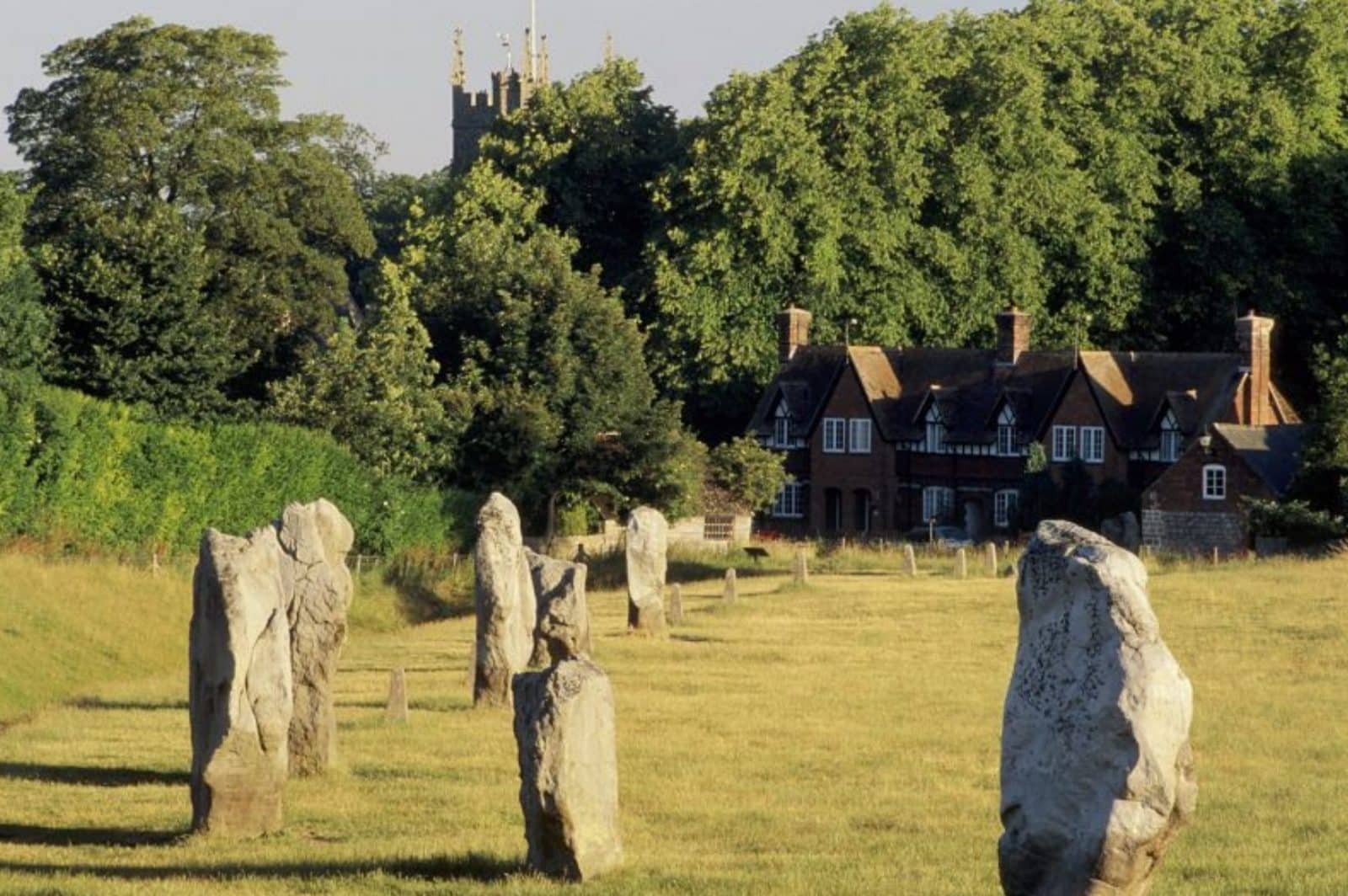
Stone Circles at Avebury May Have Surrounded House for Neolithic “One Percent”
Researchers theorize that the monument, near Stonehenge, was erected to commemorate the site of later generations’ ancestral home
by Meilan Solly, Smithsonian.com
Avebury, a sprawling network of stone circles situated some 25 miles north of Stonehenge, may have been erected to mark the site of a house inhabited by members of the Neolithic elite, a trio of scientists posit in the journal Antiquity.
As Alison George reports for New Scientist, researchers from England’s University of Leicester and University of Southampton used ground-penetrating radar to examine a square of standing stones buried beneath the middle of the megalithic monument’s southern inner circle. This circle and a second northern inner one are surrounded by a larger circle of upright stones, English Heritage explains. The enclosing circle, in turn, is situated inside of a huge circular bank with four causewayed entrances.
First identified in June 2017, the unusually shaped square structure measures nearly 100 feet long and appears to surround the foundation of a second building—namely, a “relatively modest” wooden house dating to around 3,700 B.C., or 700 years prior to the construction of Avebury’s extant above-ground circles.
“It was once just a house,” study co-author Joshua Pollard, an archaeologist at Southampton, tells George. Thanks to the structure’s apparent memorialization by a later Neolithic community, Pollard theorizes, the home eventually became a shrine, much like Elvis Presley’s Graceland today.
According to Live Science’s Tom Metcalfe, researchers initially spotted remnants of the prehistoric house, which stood about 25 feet across, while conducting excavations in 1939. At the time, the structure was thought to date to the medieval period and was therefore not afforded the level of academic rigor seen in the latest study.
The new findings place the buried foundations in an updated context, drawing on pottery and flint tools found in and around Avebury, as well as comparisons with similar structures across the British Isle, to date the house to the early Neolithic period.
Writing in the study, the scientists point out that the elite home, constructed out of sturdy wood not often used during the era, likely lasted only a generation or two. Once the building’s daub walls collapsed, however, they created a “visible earthwork” that was later treated with “careful respect.”
In an interview with Metcalfe, Pollard says, “For the most part, people were not living in nice, solid wooden structures of this kind.”
He continues, “… People who inhabited these buildings were perhaps of a more senior social status, [or] of a more important lineage than the rest of the population.”
To elevate the site from the “quotidian to the sacred,” as the archaeologists observe in the study, subsequent generations of Neolithic locals enclosed it within a stone square, then added the increasingly more complex monolith formations that characterize Avebury today. In all, Pollard explains to New Scientist’s George, the monument came into being over multiple stages.
“The house is the first thing,” lead author Mark Gillings, an archaeologist at the University of Leicester, told the Guardian’s Hannah Devlin following the square’s discovery in 2017. “It falls into ruin but they’re still remembering and respecting it. They put a square around it about 3,000 B.C. and then the circles. It’s like ripples on a pond coming out from the house.”
Speaking with George, Timothy Darvill, an archaeologist at Bournemouth University who was not involved in the study, calls the Antiquity paper “interesting” but says that without firm dates for the Avebury megaliths’ construction, “it’s not a clincher.”
To address this question and gain an even clearer understanding of Avebury’s origins, Gillings, Pollard and co-author Kristian Strutt of the University of Southampton hope to carry out further investigations at the monument. A key point of interest is the network’s northernmost inner circle, which could have been built to similarly commemorate a home owned by individuals in the upper echelons of Neolithic society.

Carol graduated from Riverside White Cross School of Nursing in Columbus, Ohio and received her diploma as a registered nurse. She attended Bowling Green State University where she received a Bachelor of Arts Degree in History and Literature. She attended the University of Toledo, College of Nursing, and received a Master’s of Nursing Science Degree as an Educator.
She has traveled extensively, is a photographer, and writes on medical issues. Carol has three children RJ, Katherine, and Stephen – one daughter-in-law; Katie – two granddaughters; Isabella Marianna and Zoe Olivia – and one grandson, Alexander Paul. She also shares her life with her husband Gordon Duff, many cats, and two rescues.
ATTENTION READERS
We See The World From All Sides and Want YOU To Be Fully InformedIn fact, intentional disinformation is a disgraceful scourge in media today. So to assuage any possible errant incorrect information posted herein, we strongly encourage you to seek corroboration from other non-VT sources before forming an educated opinion.
About VT - Policies & Disclosures - Comment Policy



